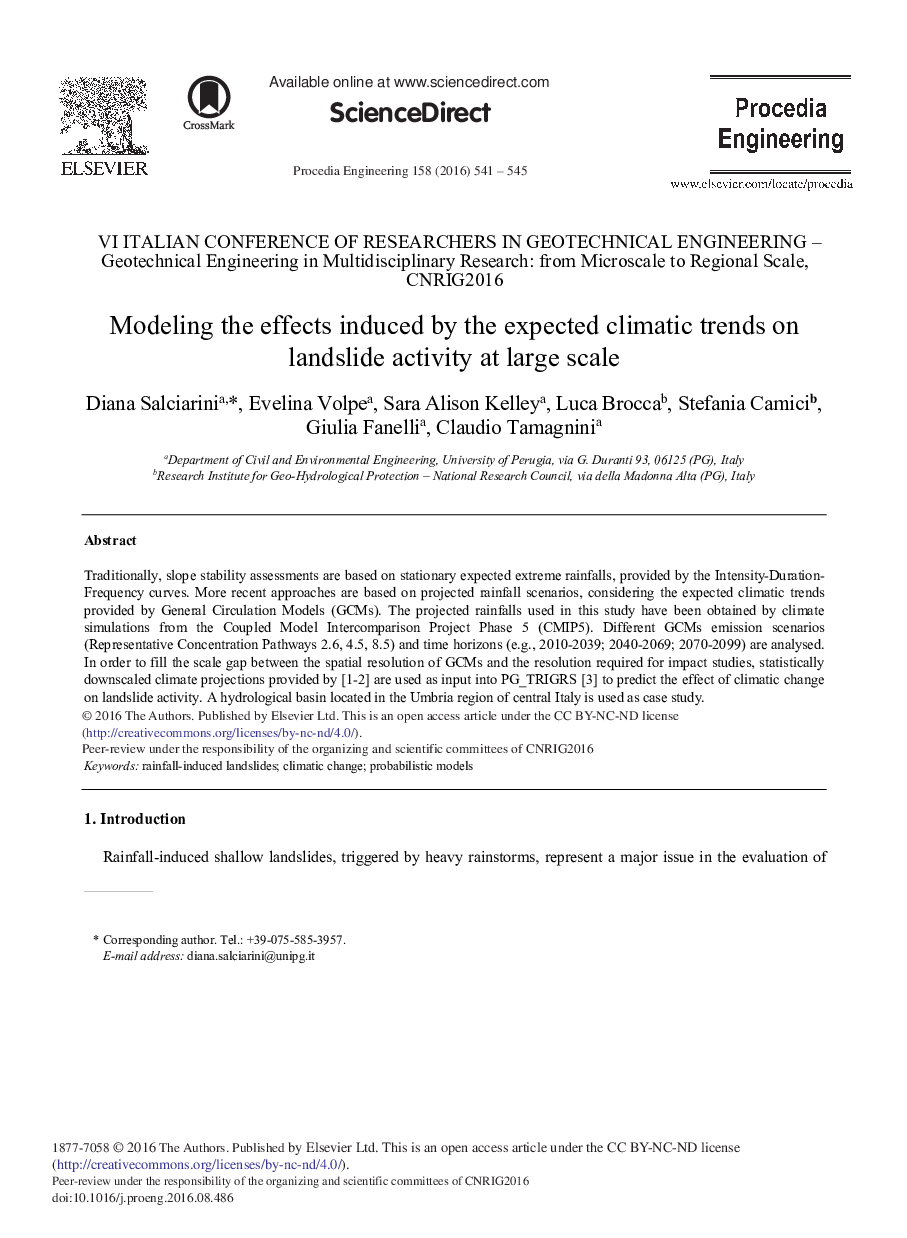| Article ID | Journal | Published Year | Pages | File Type |
|---|---|---|---|---|
| 5030063 | Procedia Engineering | 2016 | 5 Pages |
Traditionally, slope stability assessments are based on stationary expected extreme rainfalls, provided by the Intensity-Duration-Frequency curves. More recent approaches are based on projected rainfall scenarios, considering the expected climatic trends provided by General Circulation Models (GCMs). The projected rainfalls used in this study have been obtained by climate simulations from the Coupled Model Intercomparison Project Phase 5 (CMIP5). Different GCMs emission scenarios (Representative Concentration Pathways 2.6, 4.5, 8.5) and time horizons (e.g., 2010-2039; 2040-2069; 2070-2099) are analysed. In order to fill the scale gap between the spatial resolution of GCMs and the resolution required for impact studies, statistically downscaled climate projections provided by [1,2] are used as input into PG_TRIGRS [3] to predict the effect of climatic change on landslide activity. A hydrological basin located in the Umbria region of central Italy is used as case study.
